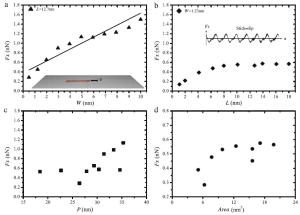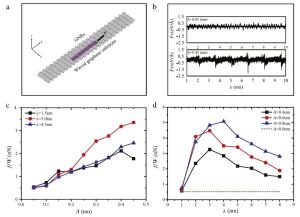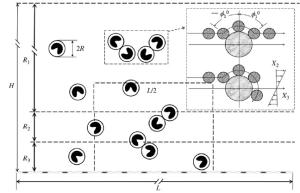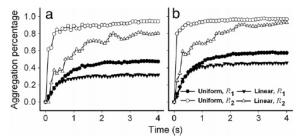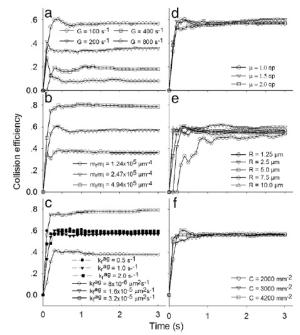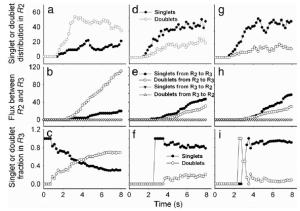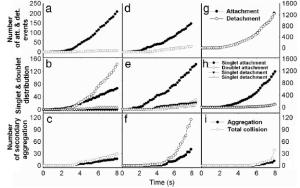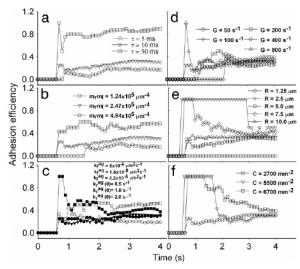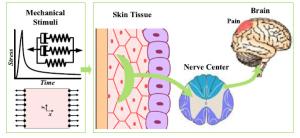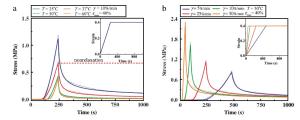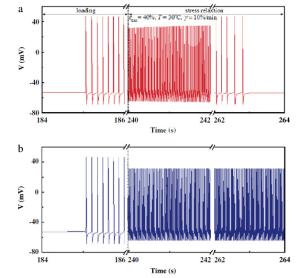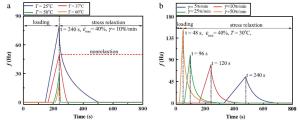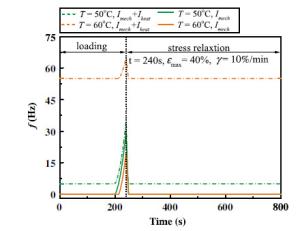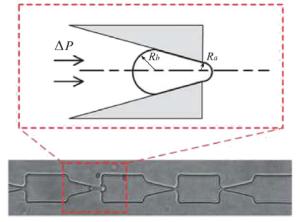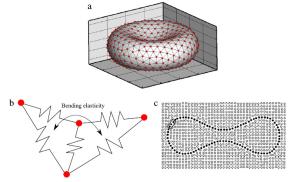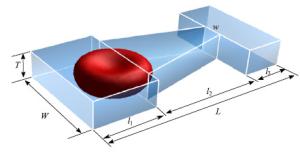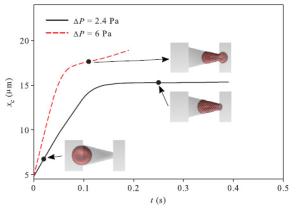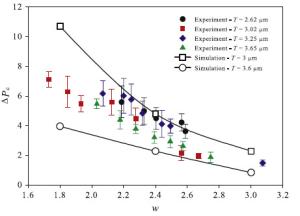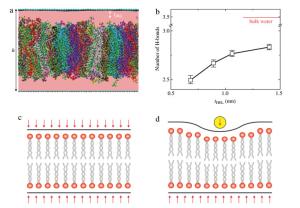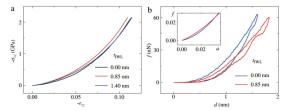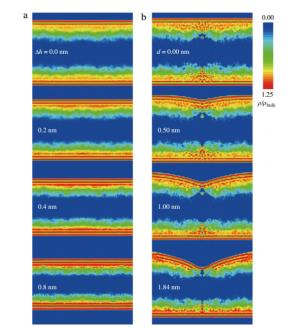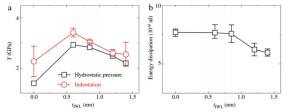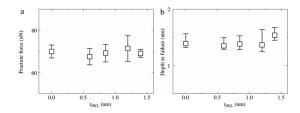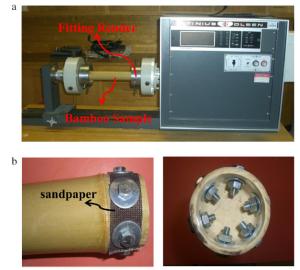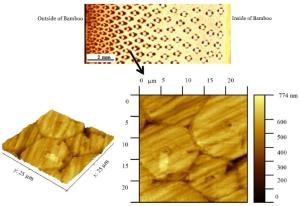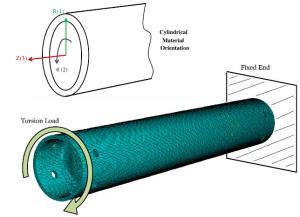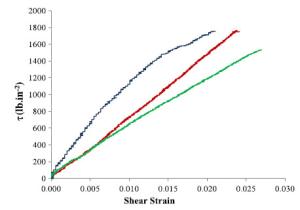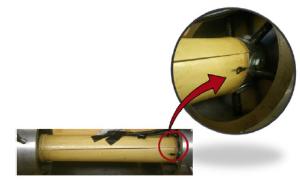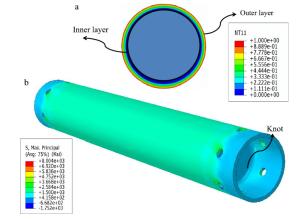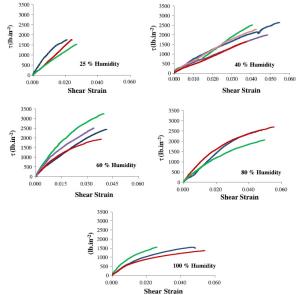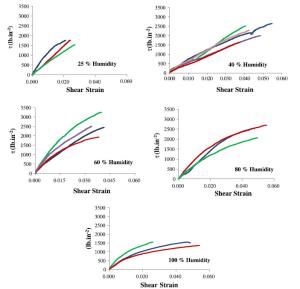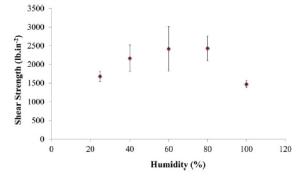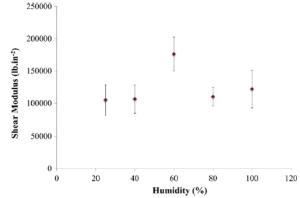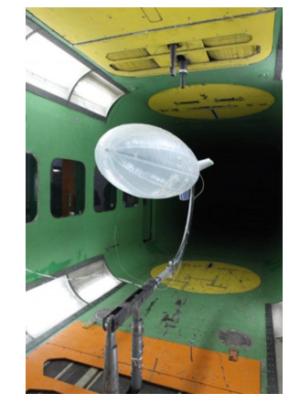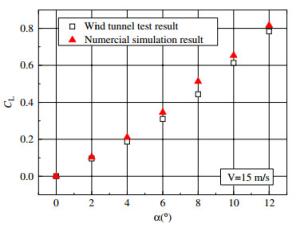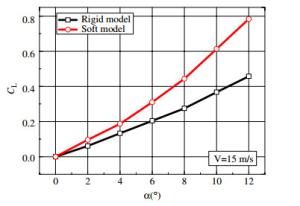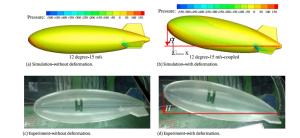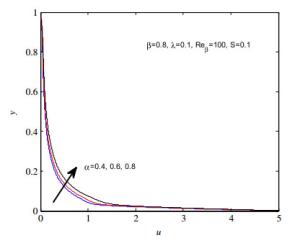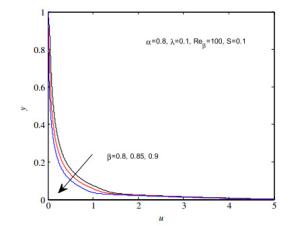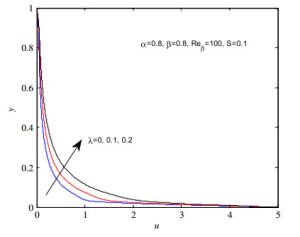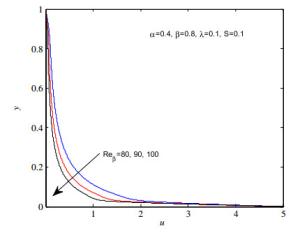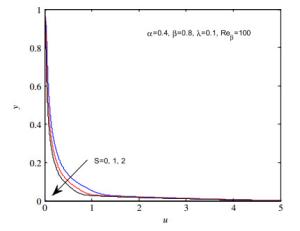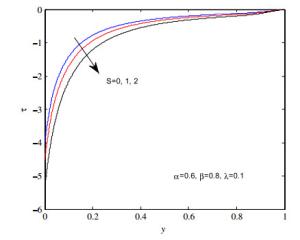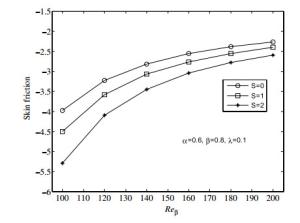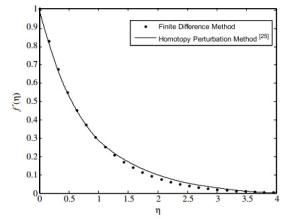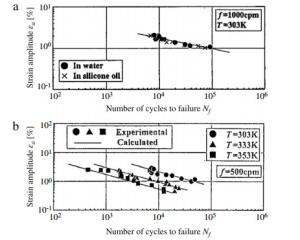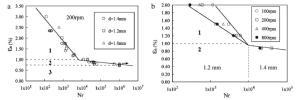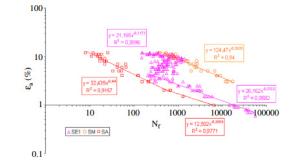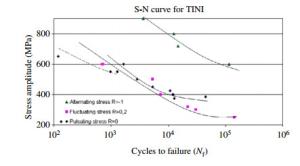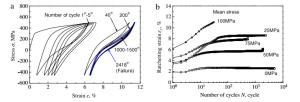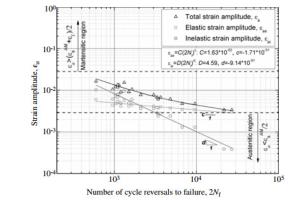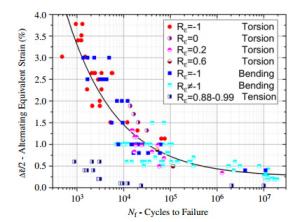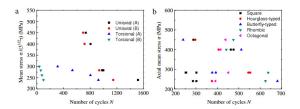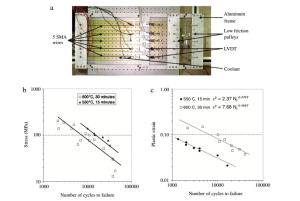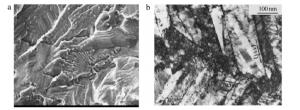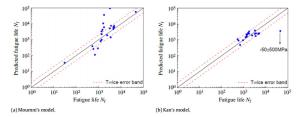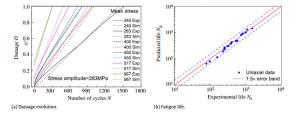Institute of Mechanics,
Chinese Academy of Sciences
2015 Vol.5(6)
Theoretical and Applied Mechanics Letters 2015, 5(6): 212-215.
doi: 10.1016/j.taml.2015.09.001
Abstract:
Friction plays a critical role in the function and maintenance of small-scale structures, where the conventional Coulomb friction law often fails. To probe the friction at small scales, here we present a molecular dynamics study on the process of dragging graphene nanoribbons on waved graphene substrates. The simulation shows that the induced friction on graphene with zero waviness is ultra-low and closely related to the surface energy barrier. On waved graphenes, the friction generally increases with the amplitude of the wave at a fixed period, but anomalously increases and then decreases with the period at a fixed amplitude. These findings provide insights into the ultra-low friction at small scales, as well as some guidelines into the fabrication of graphene-based nano-composites with high performance.
Friction plays a critical role in the function and maintenance of small-scale structures, where the conventional Coulomb friction law often fails. To probe the friction at small scales, here we present a molecular dynamics study on the process of dragging graphene nanoribbons on waved graphene substrates. The simulation shows that the induced friction on graphene with zero waviness is ultra-low and closely related to the surface energy barrier. On waved graphenes, the friction generally increases with the amplitude of the wave at a fixed period, but anomalously increases and then decreases with the period at a fixed amplitude. These findings provide insights into the ultra-low friction at small scales, as well as some guidelines into the fabrication of graphene-based nano-composites with high performance.
Theoretical and Applied Mechanics Letters 2015, 5(6): 216-221.
doi: 10.1016/j.taml.2015.09.004
Abstract:
Blood cell aggregation and adhesion to endothelial cells under shear flow are crucial to many biological processes such as thrombi formation, inflammatory cascade, and tumor metastasis, in which these cellular interactions are mainly mediated by the underlying receptor-ligand bindings. While theoretical modeling of aggregation dynamics and adhesion kinetics of interacting cells have been well studied separately, how to couple these two processes remains unclear. Here we develop a combined model that couples cellular aggregation dynamics and adhesion kinetics under shear flow. The impacts of shear rate (or shear stress) and molecular binding affinity were elucidated. This study provides a unified model where the action of a fluid flow drives cell aggregation and adhesion under the modulations of the mechanical shear flow and receptor-ligand interaction kinetics. It offers an insight into understanding the relevant biological processes and functions.
Blood cell aggregation and adhesion to endothelial cells under shear flow are crucial to many biological processes such as thrombi formation, inflammatory cascade, and tumor metastasis, in which these cellular interactions are mainly mediated by the underlying receptor-ligand bindings. While theoretical modeling of aggregation dynamics and adhesion kinetics of interacting cells have been well studied separately, how to couple these two processes remains unclear. Here we develop a combined model that couples cellular aggregation dynamics and adhesion kinetics under shear flow. The impacts of shear rate (or shear stress) and molecular binding affinity were elucidated. This study provides a unified model where the action of a fluid flow drives cell aggregation and adhesion under the modulations of the mechanical shear flow and receptor-ligand interaction kinetics. It offers an insight into understanding the relevant biological processes and functions.
Theoretical and Applied Mechanics Letters 2015, 5(6): 222-226.
doi: 10.1016/j.taml.2015.11.002
Abstract:
Pain sensation may appear under long-lasting mechanical stimulation. Although people have the experience that pain sensation generally decreases with time while the stimulation remains, the underlying mechanism remains elusive. We experimentally studied the thermal and strain ratedependent viscoelastic behavior of skin in uniaxial stretch and numerically investigated the effects of temperature and strain rate on pain sensation. The results indicate that the viscosity of skin tissue decreases with increasing temperature and reducing strain rate, which subsequently decreases the discharge frequency of skin nociceptor and thus relieves the pain sensation. The results would contribute to the understanding of pain relief mechanism and optimizing for mechanical treatment.
Pain sensation may appear under long-lasting mechanical stimulation. Although people have the experience that pain sensation generally decreases with time while the stimulation remains, the underlying mechanism remains elusive. We experimentally studied the thermal and strain ratedependent viscoelastic behavior of skin in uniaxial stretch and numerically investigated the effects of temperature and strain rate on pain sensation. The results indicate that the viscosity of skin tissue decreases with increasing temperature and reducing strain rate, which subsequently decreases the discharge frequency of skin nociceptor and thus relieves the pain sensation. The results would contribute to the understanding of pain relief mechanism and optimizing for mechanical treatment.
Theoretical and Applied Mechanics Letters 2015, 5(6): 227-230.
doi: 10.1016/j.taml.2015.11.006
Abstract:
When a red blood cell (RBC) is driven by a pressure gradient through a microfluidic channel, its passage or blockage provides a measure of the rigidity of the cell. This has also been developed as a means to separate RBCs according to their mechanical properties, which are known to change with pathological conditions such as malaria infection. In this study,weuse numerical simulations to establish a quantitative connection between the minimum pressure needed to drive an RBC through a contracting microfluidic channel and the rigidity of the cell membrane. This provides the basis for designing such devices and interpreting the experimental data.
When a red blood cell (RBC) is driven by a pressure gradient through a microfluidic channel, its passage or blockage provides a measure of the rigidity of the cell. This has also been developed as a means to separate RBCs according to their mechanical properties, which are known to change with pathological conditions such as malaria infection. In this study,weuse numerical simulations to establish a quantitative connection between the minimum pressure needed to drive an RBC through a contracting microfluidic channel and the rigidity of the cell membrane. This provides the basis for designing such devices and interpreting the experimental data.
Theoretical and Applied Mechanics Letters 2015, 5(6): 231-235.
doi: 10.1016/j.taml.2015.11.003
Abstract:
Bio-nano interfaces between biological materials and functional nanodevices are of vital importance in relevant energy and information exchange processes, which thus demand an in-depth understanding. One of the critical issues from the application viewpoint is the stability of the bio-nano hybrid under mechanical perturbations. In this work we explore mechanical responses of the interface between lipid bilayer and graphene under hydrostatic pressure or indentation loads. We find that graphene coating provides remarkable resistance to the loads, and the intercalated water layer offers additional protection. These findings are discussed based on molecular dynamics simulation results that elucidate the molecular level mechanisms, which provide a basis for the rational design of bionanotechnologyenabled applications such as biomedical devices and nanotherapeutics.
Bio-nano interfaces between biological materials and functional nanodevices are of vital importance in relevant energy and information exchange processes, which thus demand an in-depth understanding. One of the critical issues from the application viewpoint is the stability of the bio-nano hybrid under mechanical perturbations. In this work we explore mechanical responses of the interface between lipid bilayer and graphene under hydrostatic pressure or indentation loads. We find that graphene coating provides remarkable resistance to the loads, and the intercalated water layer offers additional protection. These findings are discussed based on molecular dynamics simulation results that elucidate the molecular level mechanisms, which provide a basis for the rational design of bionanotechnologyenabled applications such as biomedical devices and nanotherapeutics.
Theoretical and Applied Mechanics Letters 2015, 5(6): 236-243.
doi: 10.1016/j.taml.2015.11.007
Abstract:
Bamboo is a naturally occurring biological composite, however its microstructure and hence its properties are very complex compared to the manmade composites. Due to optimization, it can be assumed that the variation in properties along the thickness of the culm be a smooth transition for better bonding strength between layers and to prevent non uniformity in stress concentration. As a consequence, biological structures are complicated and functionally graded. Hence, a realistic model that can capture the mechanical performance of bamboo is valuable in future design of robust multifunctional composites. This paper presents the results of experimental and numerical studies on the torsional (shear) properties of bamboo. The hierarchical and multi-scale structure of bamboo and the distribution of micro-scale fibers are revealed via laser scanning and atomic force microscopy. This information was incorporated into a finite element model to analyze the mechanical behavior of bamboo under torsion and to estimate the shear modulus of bamboo along the fibers. Moreover, the effects of humidity and therefore water content on the mechanical properties of bamboo were evaluated by performing torsion tests on samples maintained in environments with different humidities. Increasing the humidity does not cause a drop in the shear modulus, however, a jump in the shear modulus did occur at around 60% humidity. Results of this study indicate that the highest strength values in samples occurred in environments with humidity levels between 60% and 80% and undergo a significant drop after that. In higher humidities, the samples behave more ductile.
Bamboo is a naturally occurring biological composite, however its microstructure and hence its properties are very complex compared to the manmade composites. Due to optimization, it can be assumed that the variation in properties along the thickness of the culm be a smooth transition for better bonding strength between layers and to prevent non uniformity in stress concentration. As a consequence, biological structures are complicated and functionally graded. Hence, a realistic model that can capture the mechanical performance of bamboo is valuable in future design of robust multifunctional composites. This paper presents the results of experimental and numerical studies on the torsional (shear) properties of bamboo. The hierarchical and multi-scale structure of bamboo and the distribution of micro-scale fibers are revealed via laser scanning and atomic force microscopy. This information was incorporated into a finite element model to analyze the mechanical behavior of bamboo under torsion and to estimate the shear modulus of bamboo along the fibers. Moreover, the effects of humidity and therefore water content on the mechanical properties of bamboo were evaluated by performing torsion tests on samples maintained in environments with different humidities. Increasing the humidity does not cause a drop in the shear modulus, however, a jump in the shear modulus did occur at around 60% humidity. Results of this study indicate that the highest strength values in samples occurred in environments with humidity levels between 60% and 80% and undergo a significant drop after that. In higher humidities, the samples behave more ductile.
Theoretical and Applied Mechanics Letters 2015, 5(6): 255-257.
doi: 10.1016/j.taml.2015.09.003
Abstract:
To understand the “elastic softening” of Li-Si alloys for the development of Li-ion batteries, the effect of stress-induced change of entropy on the mechanical properties of lithiated materials is examined within the theories of thermodynamics and linear elasticity. An approach is presented whereby the change of Gibbs free energy is governed by the change of the mixture entropy due to stress-induced migration of mobile atoms, from which the contribution of the change of the mixture entropy to the apparent elastic modulus of lithiated materials is determined. The reciprocal of the apparent elastic modulus of a lithiated material is a linear function of the concentration of mobile Li-atoms at a stress-free state and the square of the mismatch strain per unit mole fraction of mobile Li-atoms.
To understand the “elastic softening” of Li-Si alloys for the development of Li-ion batteries, the effect of stress-induced change of entropy on the mechanical properties of lithiated materials is examined within the theories of thermodynamics and linear elasticity. An approach is presented whereby the change of Gibbs free energy is governed by the change of the mixture entropy due to stress-induced migration of mobile atoms, from which the contribution of the change of the mixture entropy to the apparent elastic modulus of lithiated materials is determined. The reciprocal of the apparent elastic modulus of a lithiated material is a linear function of the concentration of mobile Li-atoms at a stress-free state and the square of the mismatch strain per unit mole fraction of mobile Li-atoms.
Theoretical and Applied Mechanics Letters 2015, 5(6): 258-261.
doi: 10.1016/j.taml.2015.11.001
Abstract:
Fluid-structure interaction is an important issue for non-rigid airships with inflated envelopes. In this study, a wind tunnel test is conducted, and a loosely coupled procedure is correspondingly established for numerical simulation based on computational fluid dynamics and nonlinear finite element analysis methods. The typical results of the numerical simulation and wind tunnel experiment, including the overall lift and deformation, are in good agreement with each other. The results obtained indicate that the effect of fluid-structure interaction is noticeable and should be considered for non-rigid airships. Flowinduced deformation can further intensify the upward lift force and pitching moment, which can lead to a large deformation. Under a wind speed of 15 m/s, the lift force of the non-rigid model is increased to approximately 60% compared with that of the rigid model under a high angle of attack.
Fluid-structure interaction is an important issue for non-rigid airships with inflated envelopes. In this study, a wind tunnel test is conducted, and a loosely coupled procedure is correspondingly established for numerical simulation based on computational fluid dynamics and nonlinear finite element analysis methods. The typical results of the numerical simulation and wind tunnel experiment, including the overall lift and deformation, are in good agreement with each other. The results obtained indicate that the effect of fluid-structure interaction is noticeable and should be considered for non-rigid airships. Flowinduced deformation can further intensify the upward lift force and pitching moment, which can lead to a large deformation. Under a wind speed of 15 m/s, the lift force of the non-rigid model is increased to approximately 60% compared with that of the rigid model under a high angle of attack.
Theoretical and Applied Mechanics Letters 2015, 5(6): 262-266.
doi: 10.1016/j.taml.2015.11.005
Abstract:
Fractional boundary layer flow of Maxwell fluid on an unsteady stretching surface was investigated. Time-space dependent fractional derivatives are introduced into the constitutive equations of the fluid. We developed and solved the governing equations using explicit finite difference method and the L1- algorithm as well as shifted Grünwald-Letnikov formula. The effects of fractional parameters, relaxation parameter, Reynolds number, and unsteadiness parameter on the velocity behavior and characteristics of boundary layer thickness and skin friction were analyzed. Results obtained indicate that the behavior of boundary layer of viscoelastic fluid strongly depends on time-space fractional parameters. Increases of time fractional derivative parameter and relaxation parameter both cause a decrease of velocity while boundary layer thickness increase, but the space fractional derivative parameter and fractional Reynolds number have the opposite effects.
Fractional boundary layer flow of Maxwell fluid on an unsteady stretching surface was investigated. Time-space dependent fractional derivatives are introduced into the constitutive equations of the fluid. We developed and solved the governing equations using explicit finite difference method and the L1- algorithm as well as shifted Grünwald-Letnikov formula. The effects of fractional parameters, relaxation parameter, Reynolds number, and unsteadiness parameter on the velocity behavior and characteristics of boundary layer thickness and skin friction were analyzed. Results obtained indicate that the behavior of boundary layer of viscoelastic fluid strongly depends on time-space fractional parameters. Increases of time fractional derivative parameter and relaxation parameter both cause a decrease of velocity while boundary layer thickness increase, but the space fractional derivative parameter and fractional Reynolds number have the opposite effects.
Review on structural fatigue of NiTi shape memory alloys: Pure mechanical and thermo-mechanical ones
Theoretical and Applied Mechanics Letters 2015, 5(6): 245-254.
doi: 10.1016/j.taml.2015.11.004
Abstract:
Structural fatigue of NiTi shape memory alloys is a key issue that should be solved in order to promote their engineering applications and utilize their unique shape memory effect and super-elasticity more sufficiently. In this paper, the latest progresses made in experimental and theoretical analyses for the structural fatigue features of NiTi shape memory alloys are reviewed. First, macroscopic experimental observations to the pure mechanical and thermo-mechanical fatigue features of the alloys are summarized; then the state-of-arts in the mechanism analysis of fatigue rupture are addressed; further, advances in the construction of fatigue failure models are provided; finally, summary and future topics are outlined.
Structural fatigue of NiTi shape memory alloys is a key issue that should be solved in order to promote their engineering applications and utilize their unique shape memory effect and super-elasticity more sufficiently. In this paper, the latest progresses made in experimental and theoretical analyses for the structural fatigue features of NiTi shape memory alloys are reviewed. First, macroscopic experimental observations to the pure mechanical and thermo-mechanical fatigue features of the alloys are summarized; then the state-of-arts in the mechanism analysis of fatigue rupture are addressed; further, advances in the construction of fatigue failure models are provided; finally, summary and future topics are outlined.
 Submit a Paper
Submit a Paper
 Subscription
Subscription
News
MORE+
Call for Papers
MORE+
- Crossing-Mechanics Driven by Big Data
- Machine learning in the fluid mechanics research of wind energy
- Mechanics of Origami/Kirigami structures and metamaterials
- New insights and perspectives on impact biomechanics for human tissues: from injury prevention, protection to protective equipment
- Environmental Mechanics for Extreme Natural Events



